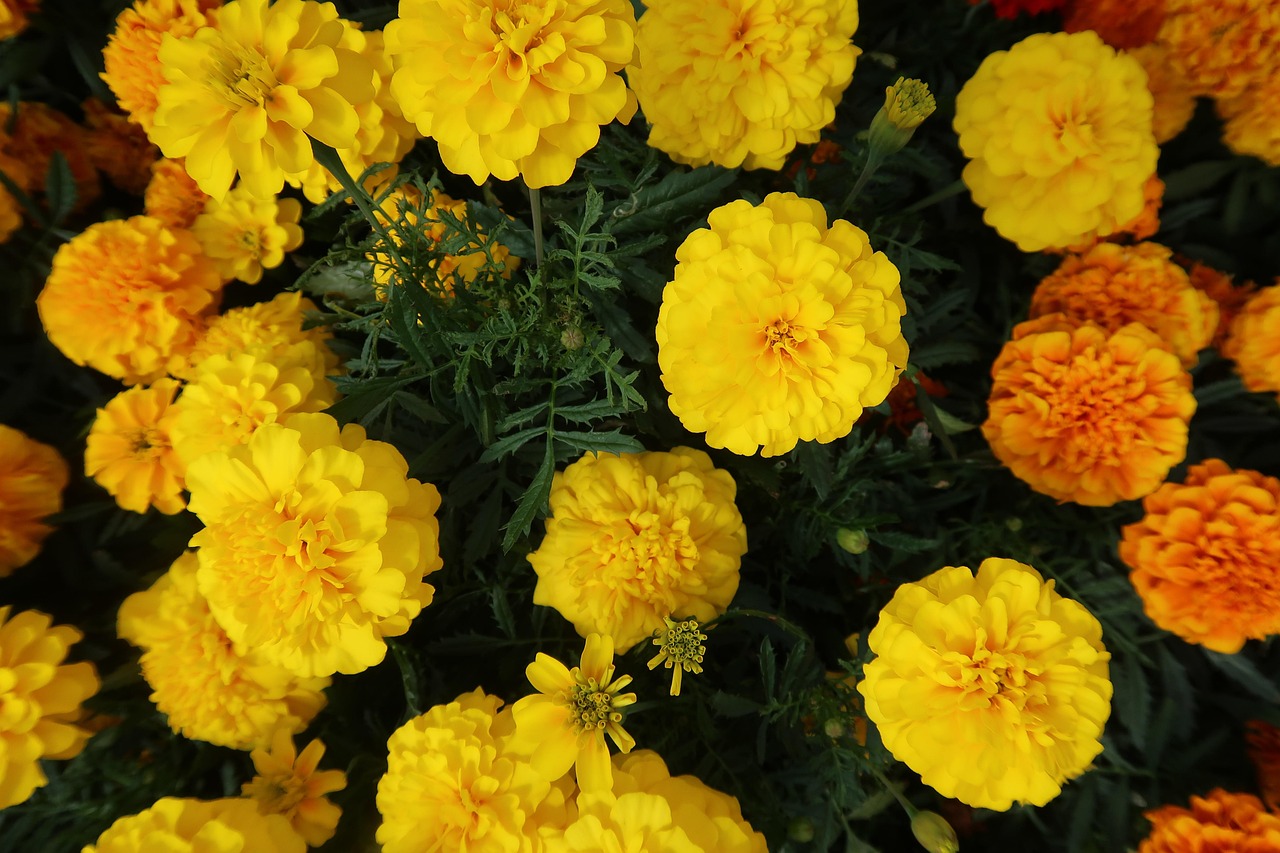Marigolds — with their golden, sun-kissed blooms — are the kind of flowers that make a garden feel instantly alive. They’re bright, cheerful, and surprisingly versatile, whether you’re using them to frame your garden beds, repel pests, or brighten your patio pots.
But here’s the challenge: marigolds are tender annuals in most climates, which means frost can end their season in one cold snap. If you’ve ever watched your thriving marigold plants turn to mush overnight, you know the heartbreak.
The good news? You can protect your marigolds and give them a head start for next year. Overwintering — the art of keeping plants alive through winter — isn’t just for hardy perennials. With the right approach, your marigolds can survive the cold and burst back to life when spring arrives.
So, how do you make it happen? Let’s break it down step-by-step.

Understanding Marigolds and Their Winter Needs
Are Marigolds Really Annuals?
Marigolds are technically tender perennials in their native warm climates, but most gardeners grow them as annuals because they can’t survive frost. That means if you live in USDA Zones 8 and below, your marigolds will likely die back unless you step in to protect them.
Why Overwinter Instead of Replanting?
Sure, marigold seeds are cheap and easy to grow, but overwintering offers big benefits:
- Earlier blooms — Overwintered plants get a jump start, flowering weeks before newly planted seeds.
- Larger plants — Mature plants have a head start on growth.
- Sentimental value — If you have a favorite variety or a special plant, overwintering keeps it going.
Option 1: Bringing Marigolds Indoors for Winter
If you want to keep your plants alive and blooming through the cold months, bringing them indoors is your best bet.
Step 1: Choose the Healthiest Plants
Before frost hits, select your strongest, most vibrant marigolds. Look for plants with:
- Healthy green leaves (no yellowing or spots)
- Strong stems
- No signs of pests or disease
Step 2: Dig and Pot Them Up
- Use a trowel to gently lift the marigold from the soil, keeping as much root system intact as possible.
- Place in a pot with fresh, well-draining potting mix.
- Water lightly to help settle the roots.
Step 3: Give Them the Right Indoor Spot
Marigolds need at least 6 hours of bright sunlight daily. A south-facing window or under a grow light works well.
- Keep temperatures between 60–70°F (15–21°C).
- Water sparingly — only when the top inch of soil feels dry.
Option 2: Taking Marigold Cuttings
Don’t want to bring whole plants inside? Take cuttings instead — they take up less space and are easier to manage.
How to Take Cuttings:
- Snip a 4–6 inch healthy stem just below a leaf node.
- Remove lower leaves, leaving only the top two sets.
- Dip the cut end in rooting hormone (optional but speeds growth).
- Place in a small pot with a mix of perlite and peat moss.
- Keep in bright, indirect light and mist regularly.
Within 3–4 weeks, roots will develop, and you’ll have baby marigold plants ready for spring.
Option 3: Saving Marigold Seeds
If overwintering whole plants isn’t your thing, you can still “overwinter” marigolds in seed form.
Collecting Seeds:
- Allow flower heads to dry on the plant until they turn brown and papery.
- Snip off the heads and break them open over a paper towel.
- Separate seeds from chaff and store in a cool, dry place in a labeled envelope.
Come spring, you can plant these seeds indoors 6–8 weeks before the last frost for an early start.
Outdoor Overwintering (Mild Climates Only)
If you live in USDA Zones 9–11, your marigolds may survive outdoors with a little help.
How to Protect Outdoor Marigolds from Chilly Nights:
- Mulch heavily around the base to insulate roots.
- Cover with frost cloth or an old sheet during cold snaps.
- Avoid overwatering — soggy roots in cold weather can rot.
Troubleshooting Common Overwintering Problems
Even with the best care, overwintering marigolds comes with challenges. Here’s how to handle them:
Yellowing Leaves Indoors
Cause: Overwatering or low light.
Fix: Cut back on watering and move to a brighter spot.
Leggy Growth
Cause: Not enough light.
Fix: Use a grow light for 12–14 hours a day.
Pests Like Aphids or Spider Mites
Cause: Indoor conditions encourage pests.
Fix: Inspect plants weekly and wipe leaves with a mild soapy water solution.
When to Move Marigolds Back Outdoor
Timing is everything. Move your marigolds outdoors only after all danger of frost has passed.
- Start by hardening them off — place them outside for a few hours each day, gradually increasing time over a week.
- Plant them back into garden beds or larger containers.
The reward? Blooms weeks earlier than your neighbors who started from seed.
Final Tips for Marigold Success
- Feed lightly in winter — too much fertilizer encourages weak growth.
- Rotate pots indoors to ensure even light exposure.
- Prune spent flowers to keep plants tidy and blooming.
